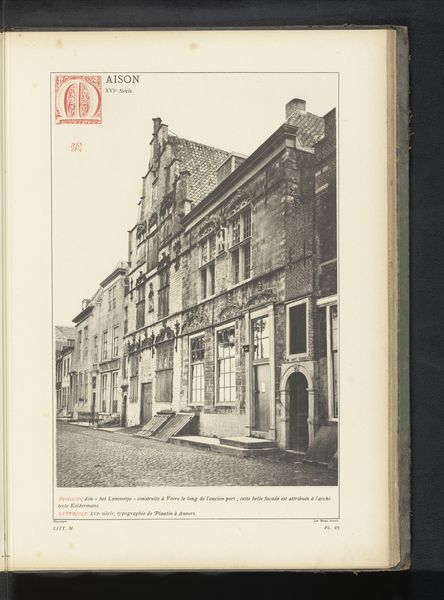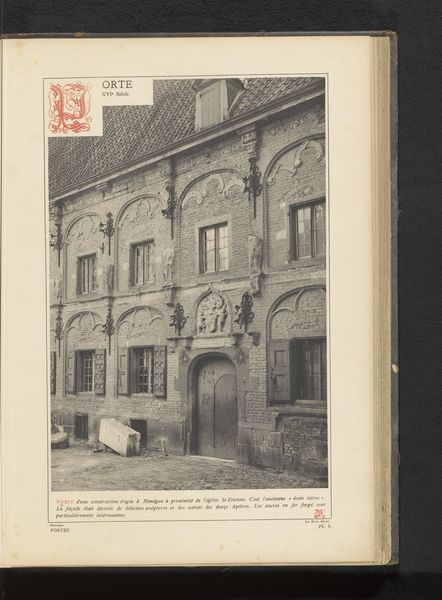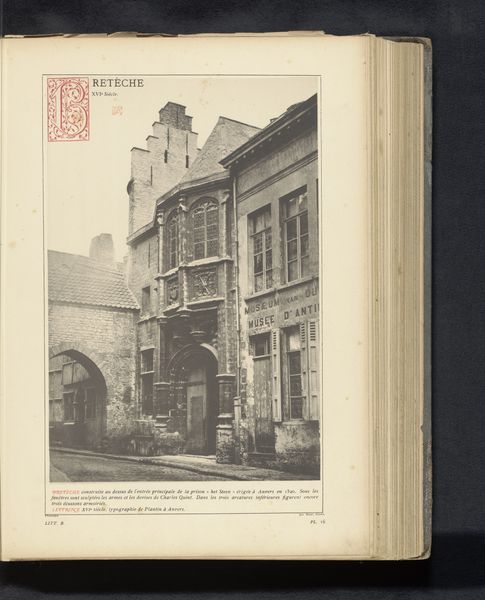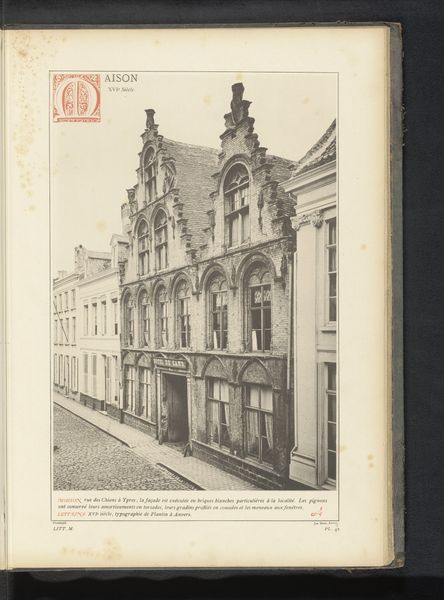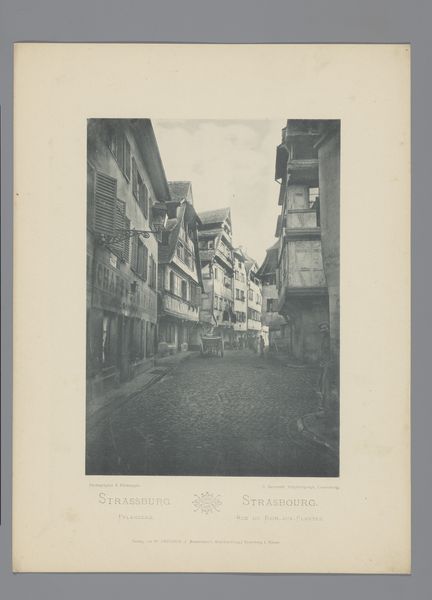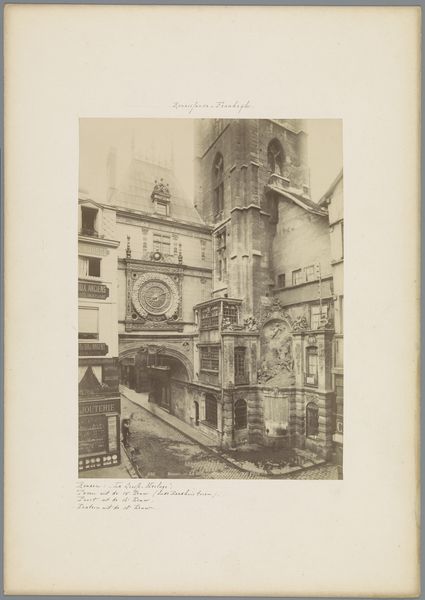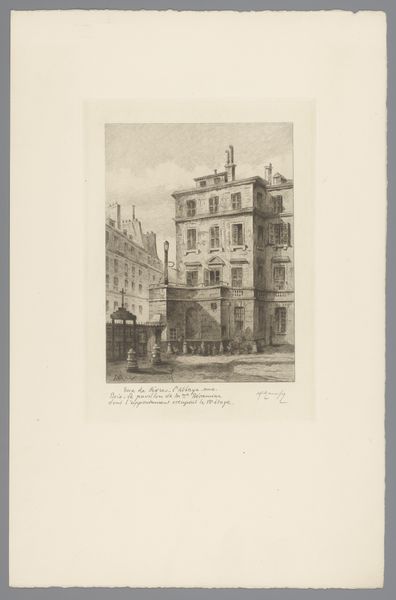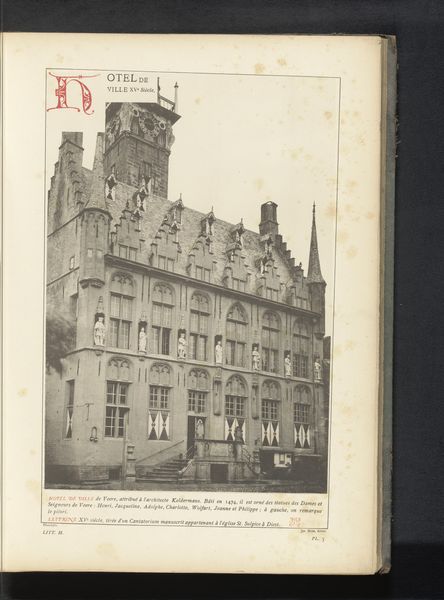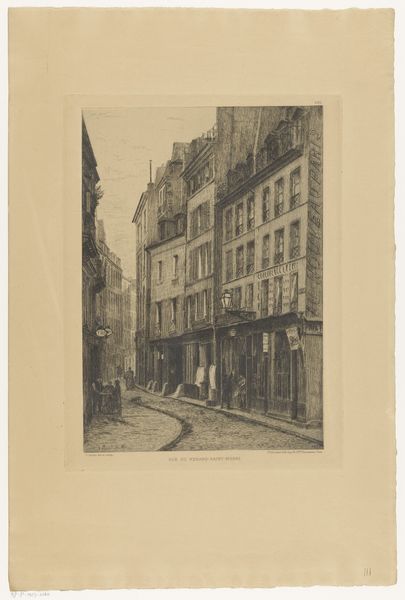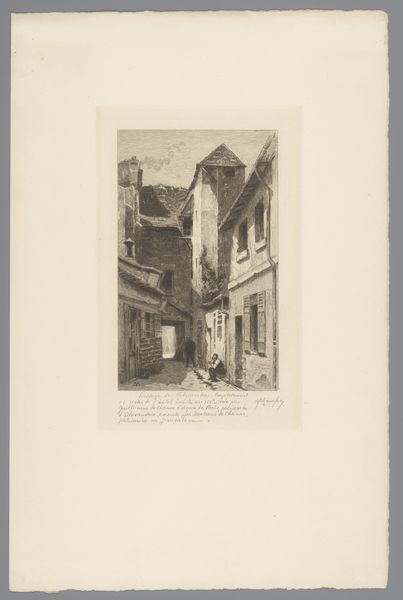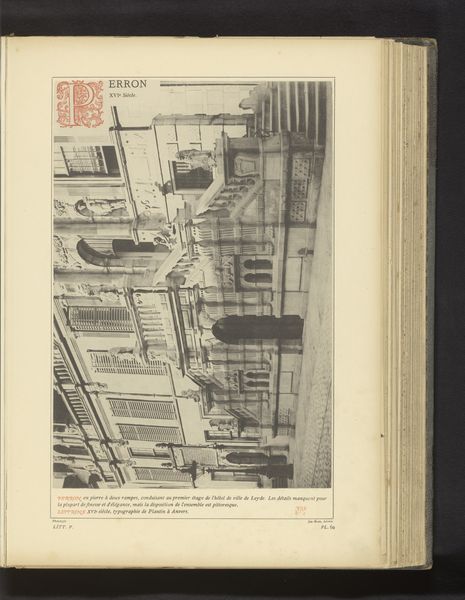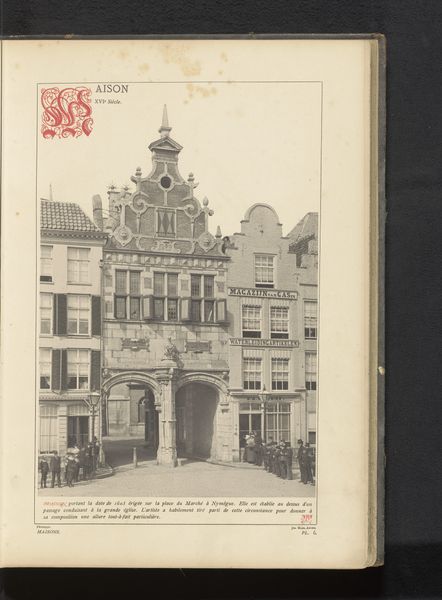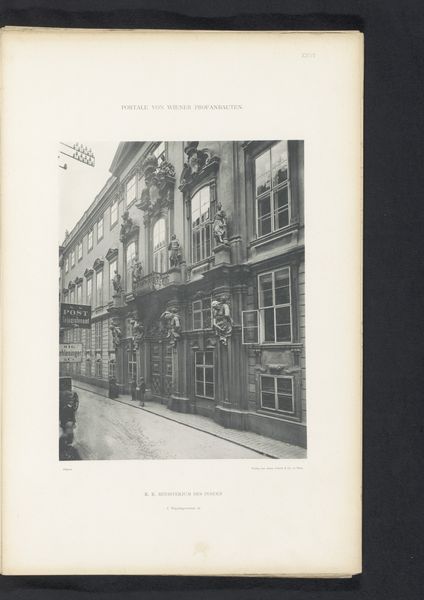
print, photography, gelatin-silver-print, architecture
# print
#
photography
#
gelatin-silver-print
#
cityscape
#
architecture
#
realism
Dimensions: height 338 mm, width 229 mm
Copyright: Rijks Museum: Open Domain
Curator: So, this gelatin silver print, a photograph titled "View of a Lodging in Brussels, Belgium," predates 1880. What strikes you about it? Editor: It feels very documentary. The building’s architecture is interesting. What kind of details stand out to you? Curator: I'm drawn to the gelatin silver print itself as a product. Photography emerged alongside industrialization. Look at how it democratized the means of image production. Suddenly, architectural details previously accessible only through laborious hand-drawing became easily reproducible. The material transformation of the city itself—its stones and mortar—were mirrored by the chemical transformation on the photographic plate. What social forces were at play? Editor: Hmm, so the ability to quickly capture images changed the relationship between architecture and the public? Curator: Precisely. Photography allowed for a new kind of consumption of architecture. Think about the laborers who built this lodging versus those who could now "own" its image through a print. The materials used—the gelatin, the silver—speak to this shift. How did these changes affect labor? Editor: So, looking at the print isn't just about seeing a building, but also considering the industrial processes behind it. It makes you think about the relationship between labor and representation, and how a photograph changed access to architecture for the public! Curator: Exactly. It shifts our perspective from the aesthetic to the tangible forces that shaped both the building and its image. Editor: Thanks, I wouldn't have considered it in that way!
Comments
No comments
Be the first to comment and join the conversation on the ultimate creative platform.

